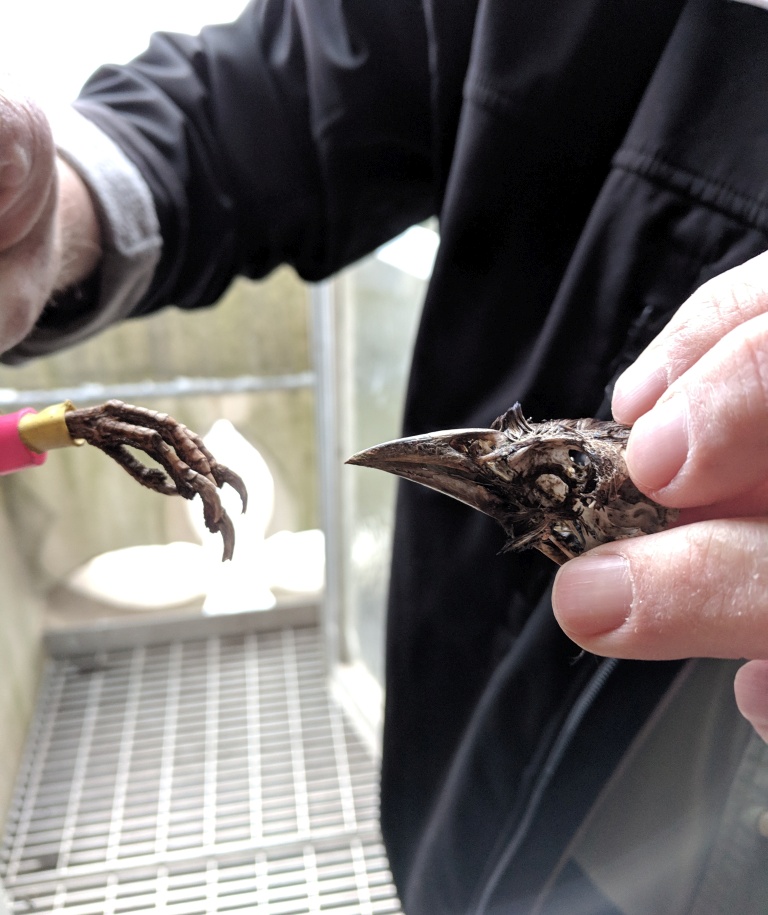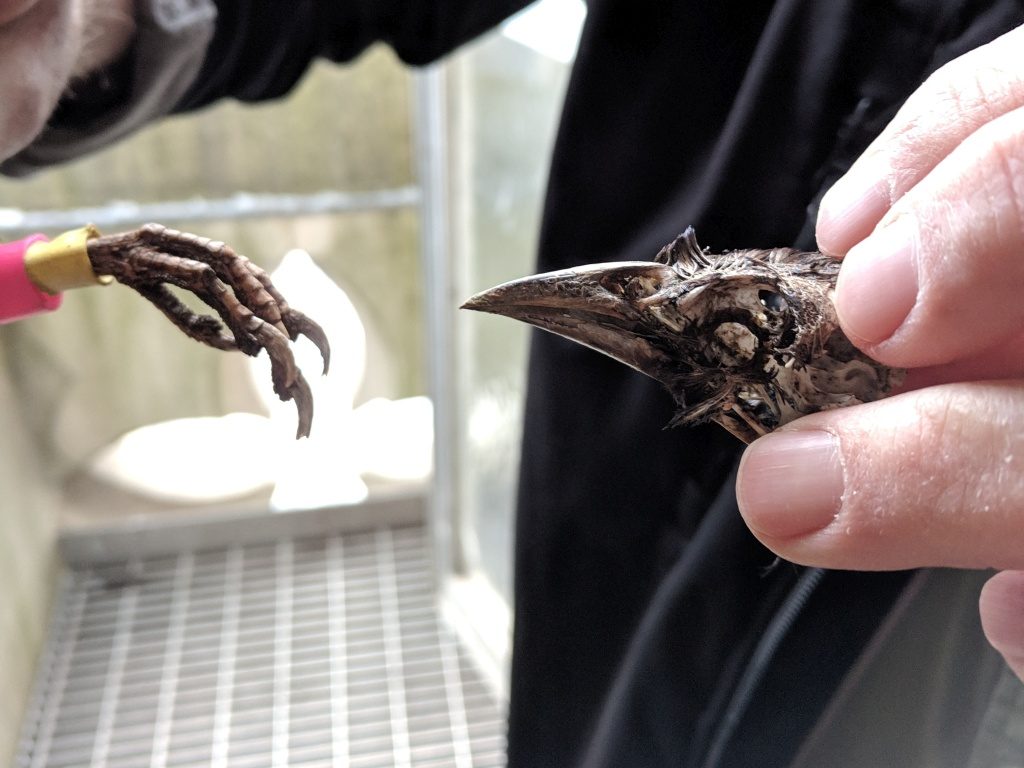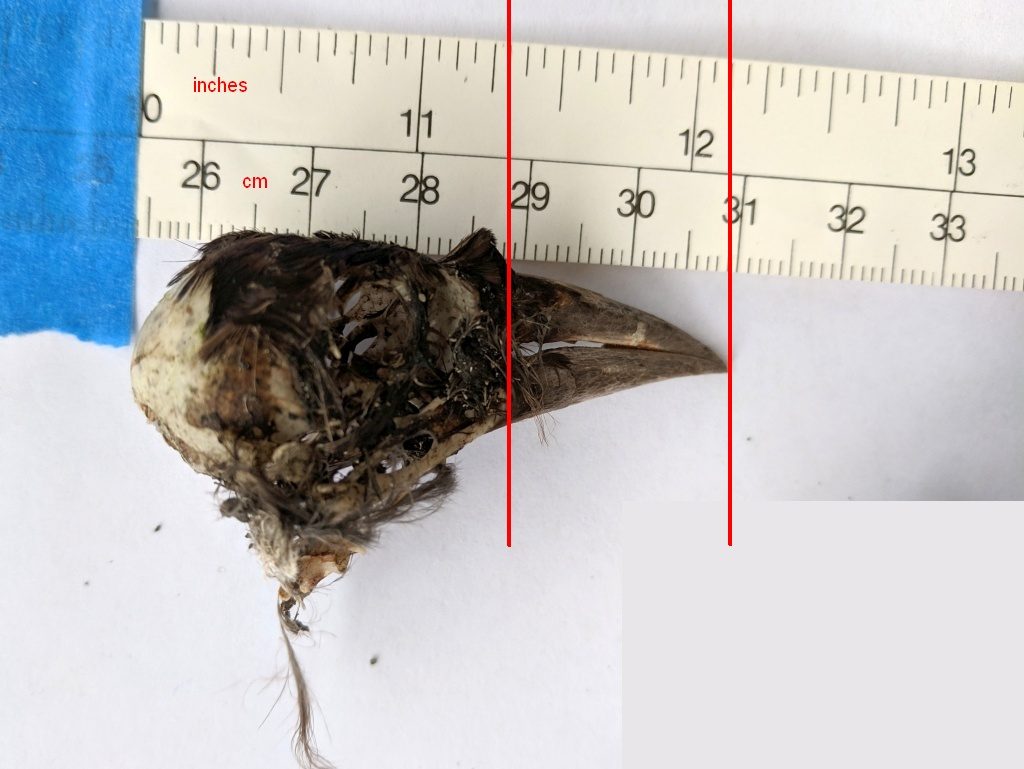
Early this month when Bob Mulvihill stepped out on the ledge to clean the Cathedral of Learning falconcams, he found this evidence of a peregrine’s meal. What species is it? Did the peregrines eat a crow?
The remaining head feathers are black and slightly iridescent. The beak is big and a bit down-curved. The feet look rather large for the bird’s body. Obviously the bird has plastic color-bands but there was no USFW band on its right leg so there’s no way to trace it.
Here’s a closer look:

Crow beaks are 2.5 inches long. How long is the beak on this bird? Less than 1 inch.

The iridescent head feathers and slightly down-curved one-inch bill point to a common grackle rather than a crow.
I’m still not sure what this bird was, but I do know the peregrines did not eat crow.
(photos by Kate St. John)

But why would a grackle be banded?
Donna, songbirds are banded when the individuals are being studied. I don’t know of any grackle studies but I am going to try to find out.
We’re camping at Fort Bragg CA. There is a pair of peregrines here at the cliffs. I saw one fly overhead, then dip towards a pine. About a dozen ravens exploded out of the pine! Certainly a peregrine would not eat a raven…
Why not a grackle and a racing pigeon? Why assume it’s from the same individual bird? The bands look like pigeon bands.